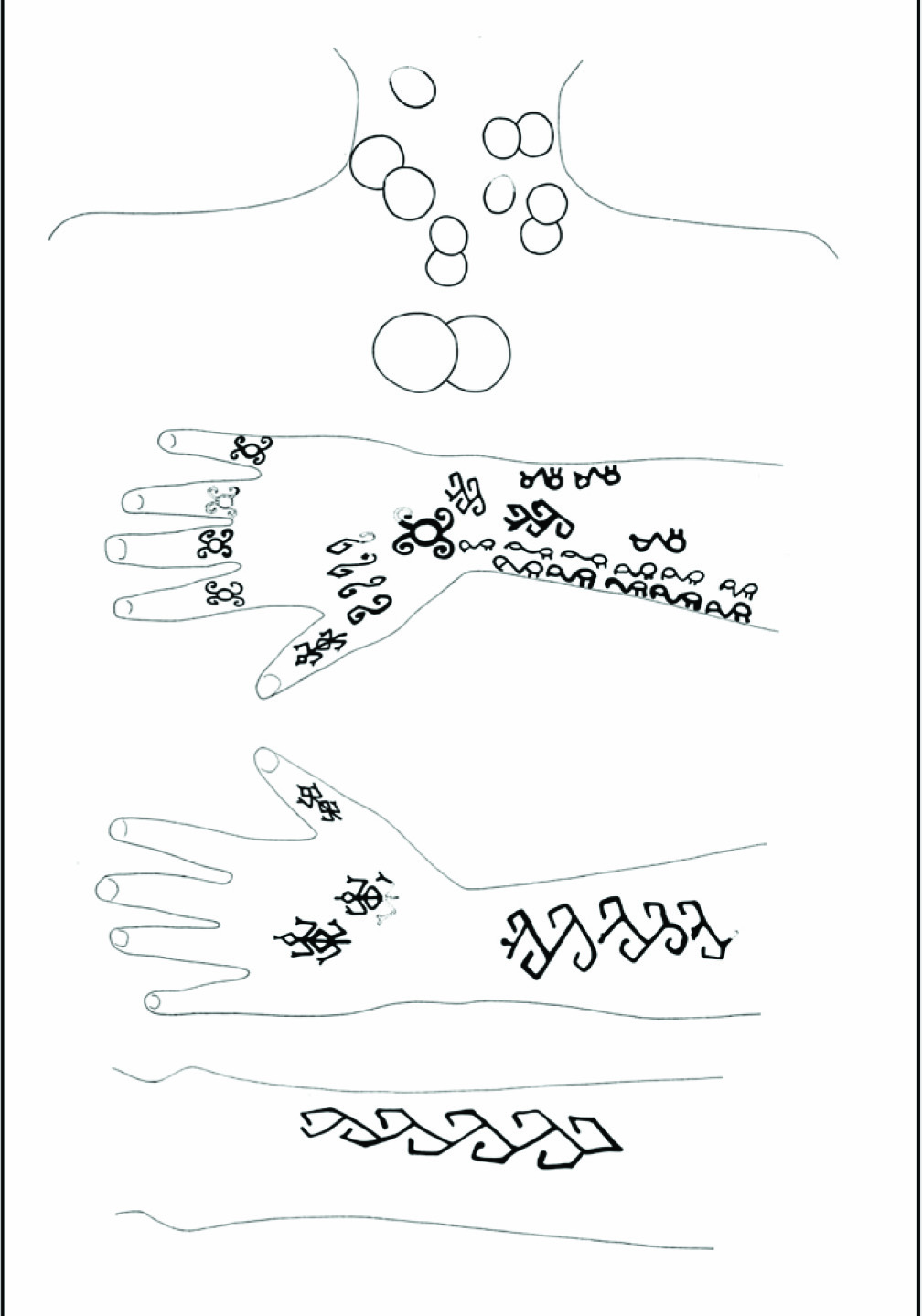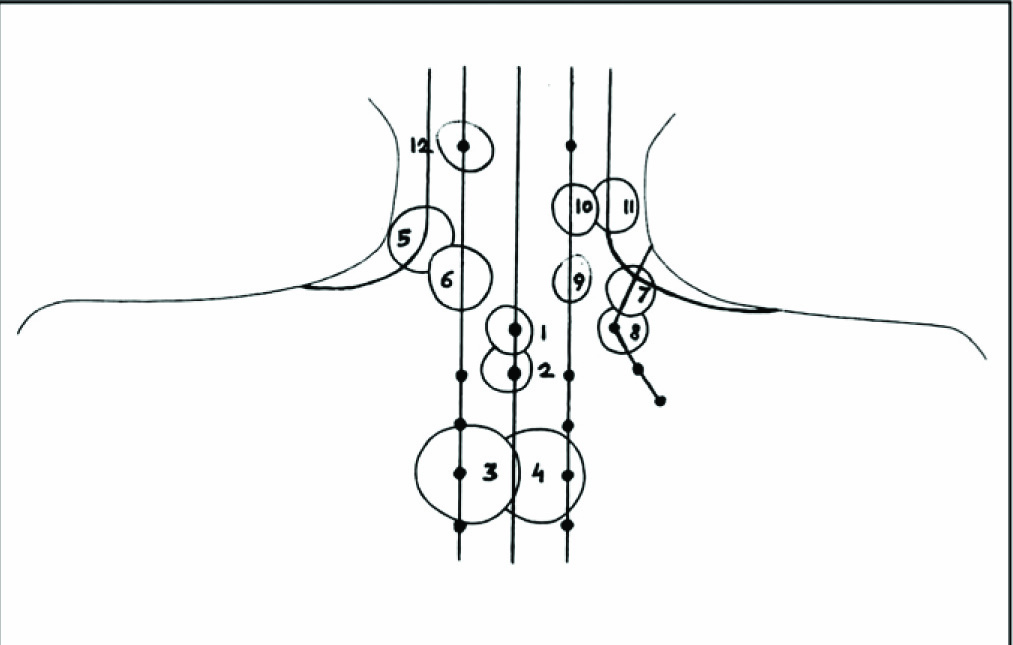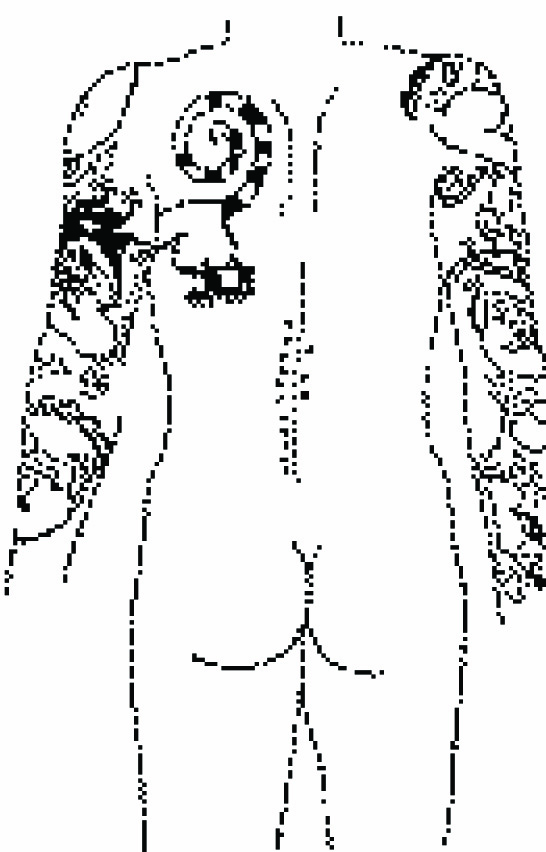
Circular tattoos on the neck of a Peruvian mummy suggest that a medical treatment similar to traditional Chinese acupuncture was being used in south America in ancient times.
I covered the research for New Scientist recently, but I really don't think the story works without pictures of the tattoos so here they are, along with a bit more information about ancient tattoos...
The 1000-year-old mummy was found unwrapped in the sand of the desert at Chiribaya Alta in Southern Peru, in around 1990. She has decorative tattoos representing birds, apes, reptiles and symbols on her hands, arms and lower left leg.
Decorative tattoos are fairly common in human mummies. The oldest known tattoo dates from 6000 BC from the south American Chinchorros culture, and shows a thin pencil moustache tattooed onto the upper lip of a male adult.
But this mummy also has some tattoos that don't appear to be decorative - circles of different sizes placed at irregular positions on her neck. They aren't particularly pretty, and would have been hidden by her hair.
Konrad Spindler, an archaeologist best known for his excavations of Otzi the Iceman, wondered if they might have been part of a medical or therapeutic ritual, perhaps to ease neck pain. He made drawings of the tattoos (see top pic) and brought them back to Europe, along with samples of skin punched from the tattoos.
Maria Anna Pabst from the University of Graz, Austria, and her colleagues used various microscopy techniques to investigate what the tattoos were made of. The decorative markings were made of soot, which is quite common for ancient tattoos. But the dye in the neck circles consisted of partially burned plant material. It's the first time that two different kinds of tattooing materials have been found in the same mummy (Journal of Archaeological Science vol 37 p 3256).
 Pabst told me that this is strong evidence the neck circles were meant for a separate purpose from the decorative tattoos. "If you use different materials, they have different functions," she says.
Pabst told me that this is strong evidence the neck circles were meant for a separate purpose from the decorative tattoos. "If you use different materials, they have different functions," she says.
The idea that tattoos could have a medical purpose has been suggested before. For example, Otzi himself has the oldest tattoos ever found on a European mummy - some 15 groups of lines and shapes on his back and legs.
Spindler and his colleagues pointed out in the Lancet in 1999 (vol 354 p 1023) that Otzi's tattooed lines are located very close to classical acupuncture points, and suggested that there might have been a medical system similar to acupuncture practised in Central Europe 5200 years ago.
X-ray scans have shown that Otzi had chronic wear in his hip, knee and ankle joints and his lower spine, and the team concluded that his tattoos matched the acupuncture points that would be used to treat these ailments. They could have been part of the treatment itself, or used as a guide to self-treatment, showing Otzi where to stick the needles when he was in pain.
 Of course this evidence is circumstantial, and it's extremely difficult to know what was really intended. But Pabst's comparison of two types of tattoo in the Peruvian mummy adds another useful line of evidence. It is one of only two mummies known with both decorative and what appear to be medicinal tattoos. (The other is a Scythian nomad prince from the Altai mountains, dating from around 500 BC, who has pictures of mythical creatures tattooed on his arms, shoulders, chest, back and right leg, as well as a series of dots down his spine and on his ankle - see pic, left.)
Of course this evidence is circumstantial, and it's extremely difficult to know what was really intended. But Pabst's comparison of two types of tattoo in the Peruvian mummy adds another useful line of evidence. It is one of only two mummies known with both decorative and what appear to be medicinal tattoos. (The other is a Scythian nomad prince from the Altai mountains, dating from around 500 BC, who has pictures of mythical creatures tattooed on his arms, shoulders, chest, back and right leg, as well as a series of dots down his spine and on his ankle - see pic, left.)
Pabst points out that in her mummy too, the circles match very well with traditional Chinese acupuncture points (see second pic, above), which is a surprise because China and south America are on different land masses. The knowledge must either have been carried far north via the Bering Strait, or developed independently.
The neck therapy would have used needles in the same way as acupuncture, Pabst reckons, but burning medicinal plants into the skin at key sites was perhaps thought to confer extra benefits. For further clues Pabst even showed Spindler's drawing of the tattoo circles to a modern-day shamanic healer in Peru - he said that the designs suggested to him a strengthening ritual, that would have been carried out on an upper class subject.
In case you're wondering, Otzi's tattoos were made of soot - Pabst carried out microscopic analysis of them in 2009 (Journal of Archaeological Science, vol 36, p 2335). But it seems unlikely that much more information will come to light on this topic. Spindler died in 2005, and Pabst has now retired, so the project has sadly come to an end.